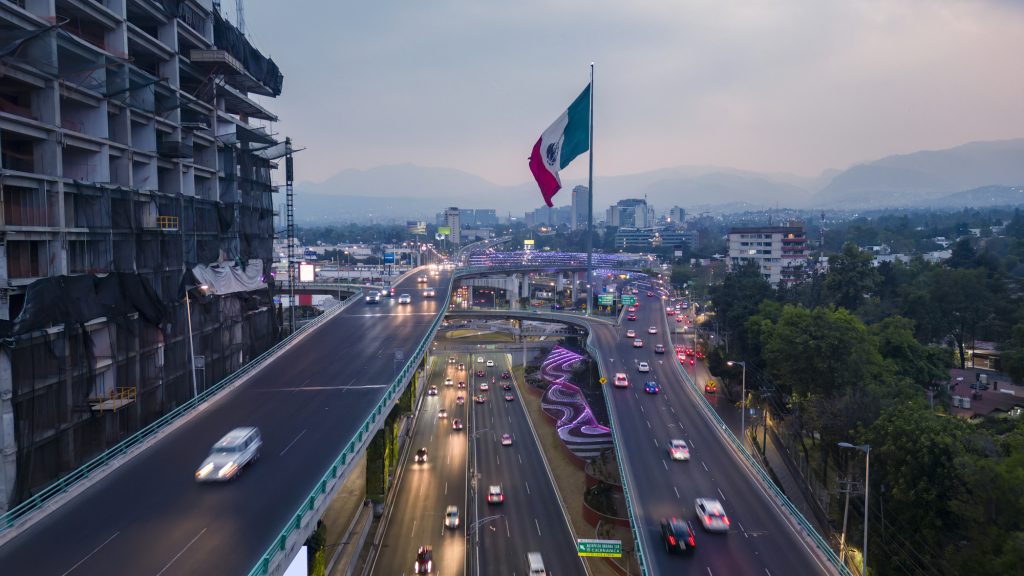The LATAM moment

Latin America (LATAM), an economically diverse region rich in natural resources and committed to innovation, is emerging as a global hotspot of opportunities for businesses seeking diversification and growth.
We spoke with some of HLB’s region's industry leaders, Pablo Maldonado, HLB Mexico, Pablo Kaplan, HLB Argentina, Carlos Camacho, HLB Costa Rica, and Douglas Locatelli, HLB Brazil, who shared insights into the region's potential with our Chief Growth Officer Coco Liu. Below they discuss LATAM's role in global supply chains, sustainability leadership, and its burgeoning technology and innovation ecosystems.
LATAM trends for 2025
As global trends evolve, Latin America quickly adapts its economic landscape, transitioning from a region of untapped potential to one of strategic importance for international businesses. Four key countries—Mexico, Argentina, Costa Rica, and Brazil—showcase how LATAM is poised to seize opportunities in the coming years.
Nearshoring Gains in Mexico
Mexico appears to be on its way to becoming one of the key players in global trade. 2023 was the year when it surpassed China as the US's largest trading partner, a result attributed mainly to the nearshoring trend, where companies are moving production closer to North American markets in a bid to reduce costs and mitigate supply chain disruptions. “Its close proximity to the US, strong trade ties with its larger neighbour, and robust manufacturing capabilities make it a highly attractive alternative to China for US companies,” Pablo Maldonado elaborates.
Actively driven by the Mexican government through incentives for foreign companies to establish manufacturing hubs, this trend significantly contributed to the growth of the country's automotive and electronics sectors. The government is now extending these efforts to attract Chinese and other Asian firms, targeting both the northern border and regions across the country.
Argentina's startup boom
With government initiatives like the Knowledge Economy Law, tax breaks, and research funding supporting investment in technology, Argentina appears determined to carve its niche as a hub for innovation. The country is rushing to position itself to lead in areas such as technology, agribusiness, or renewable energy.
Agriculture, the backbone of Argentina's economy, is embracing agri-tech innovations at a rapid pace. "We have several startups in Argentina that grow and go public in the US. This is the main sector that is moving faster in Argentina because of the reforms," Pablo Kaplan noted and continued, "And, of course, we have a big reserve of lithium in our country."
With the rising demand for lithium-ion batteries, Argentina is drawing significant foreign investment, especially from Chinese companies. "There are many companies that are coming to invest in extracting and exporting lithium because, of course, as we know, lithium is a new mineral that we all use in batteries."
Costa Rica's stability and strategy
Costa Rica has become an attractive destination for multinational corporations with its skilled workforce, political stability, and strategic location to attract investment. The country is taking steps to attract international businesses and foreign investment to strengthen its position in Latin America and the global market. Its free zone regime, which offers tax exemptions and incentives, has bolstered the medical devices, shared services, and electronics manufacturing sectors.
"The main incentives are to do with the free zone status, a general status given to local and international investors that invest in export activity. The other target is creating new jobs. So this approach solves two issues at the same time," Carlos Camacho explained.
Brazil's green energy leadership
Brazil is emerging as a leader in the transition to green energy. Douglas Locatelli expands further, “We have several pillars in Brazil. The first one is public policy and incentives. Brazil has been reducing taxes on this kind of project to incentivise investments, especially foreign investments. The second is environmental regulation, whereby all projects have to get a governmental license and consider the needs of the local people and the impact on the local people. Another pillar is foreign investments. And the green investments that will consider the preservation of nature. It is essential to include the community in this process to avoid future conflicts and guarantee equality in the results."
Why LATAM is ripe for new businesses
Latin America's diverse economies offer several advantages for businesses seeking new markets and opportunities.
Strategic geographic position and abundance of natural resources
Mexico's proximity to the United States and Costa Rica's central location make them logistical hubs for international trade. Their infrastructure investments and trade agreements facilitate seamless market access across the Americas.
Argentina's lithium reserves and Brazil's extensive biodiversity underpin opportunities in energy, agriculture, and technology. These resources are vital for emerging industries such as electric vehicles and renewable energy.
Innovation ecosystems
Digital transformation has become a driver of economic growth worldwide, and Latin America is no exception. Argentina's Knowledge Economy Law and Mexico's nearshoring incentives drive technological advancements and attract foreign investment.
In Argentina, innovation has been supported by laws designed to promote the tech industry by providing incentives without cutting taxes. As a result, the country has established a hub for this sector.
For example, universities have been encouraged to offer more technology-focused programs and to foster opportunities for companies to expand into various cities. This has enabled better access to skilled talent and supported the growth of startups in the tech space.
Several notable technology companies have emerged from Argentina and expanded regionally. "There are several examples of technology companies that were created in Argentina and have expanded into the region. MercadoLibre is one, and Globant is another," Pablo Kaplan explains. These companies have thrived by leveraging the benefits created by this supportive environment. Notably, MercadoLibre has a bigger market share in Argentina than Amazon.
For Mexico, digital transformation is visible as the country transforms into a hub for software development. Local engineers are increasingly sought after by companies from the US and Europe, delivering cutting-edge solutions remotely. "This shift has been possible due to the quality of Mexican engineers and the flexibility of remote work," Pablo Maldonado noted. Proximity to North American markets and a growing talent pool make Mexico a prime location for both nearshoring and tech outsourcing.
Brazil is investing in Fintech with the aim of bolstering financial inclusion. Douglas Locatelli elaborates that "E-commerce is also a field that has received a lot of investments. And, universities are also receiving investments from the government to educate the country's technical professionals to face new challenges in the future."
Commitment to free trade
Latin American countries are actively enhancing regional trade through free trade agreements, regulatory harmonisation, and alliances like Mercosur and the Pacific Alliance.
Mexico leads globally in free trade agreements, but there's a need to better promote these agreements internationally to maximise their potential.
Brazil is streamlining trade processes and attracting foreign investments through government reforms that lower barriers, while Costa Rica has positioned itself as a hub for foreign investment with its open economy, minimal residency restrictions, and legal guarantees for investors.
Reducing administrative burden for businesses
Latin American countries are implementing digital solutions to simplify business processes, reduce bureaucracy, and attract foreign investment. In Mexico, nearly all government procedures are fully digital.
Similarly, Argentina is introducing fully digital processes for establishing companies and managing interactions with banks, invoicing, and fiscal authorities. Although the country is not fully digital for all aspects of business yet, it is moving in that direction. The government has introduced a completely digital process for starting a company, which is a major step forward.
Brazil has eliminated paper processes, including those in courts and administrative centres, with automated systems ensuring accuracy and predictability.
Costa Rica has automated most processes to cut approval times and streamline bureaucracy, though banking still requires some physical interaction due to anti-money laundering policies.
Skilled workforce
Costa Rica has embraced disruptive technologies and crafted policies to attract global talent. A new law enables digital nomads to reside and work in Costa Rica while enjoying tax exemptions on their earnings.
"People who are so-called digital nomads can stay in Costa Rica legally speaking, work in Costa Rica, and withdraw their salaries with no income tax applicable to their income. So basically, it's a very interesting way of attracting new talent beyond the talent that we have in a relatively small population," Carlos Camacho.
HLB: Your Partner in LATAM Expansion
Each country in Latin America is charting its path toward growth by leveraging unique strengths. Costa Rica focuses on the synergy between tourism and real estate, while Mexico is capitalising on its booming automotive manufacturing sector, fueled by Chinese investment. Meanwhile, Brazil is leading in clean energy and manufacturing, and Argentina is seeing growth in mining, energy exploration, and technology, driving a surge in professional services.
As the HLB Global Summit showcased, LATAM's future is bright. With the right strategy and local expertise, your business can thrive in this dynamic and diverse market. Partner with HLB to unlock the potential of Latin America and drive your global growth.
Ready to explore opportunities in Latin America? Contact HLB today to learn how we can support your business expansion into this exciting region. Visit HLB for more insights and tailored solutions.
Related content






